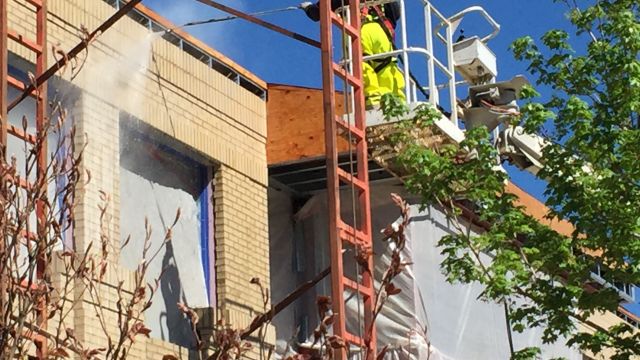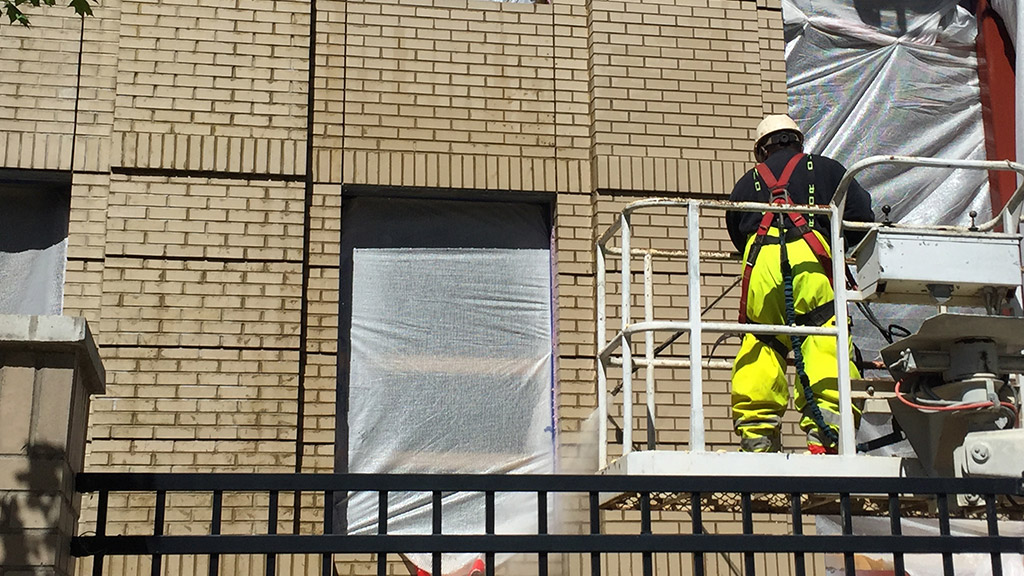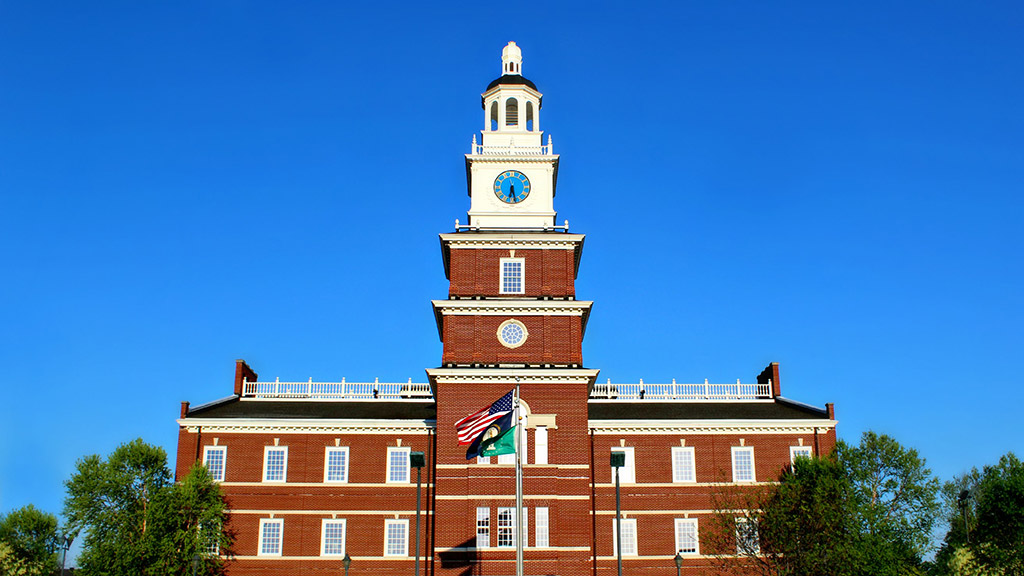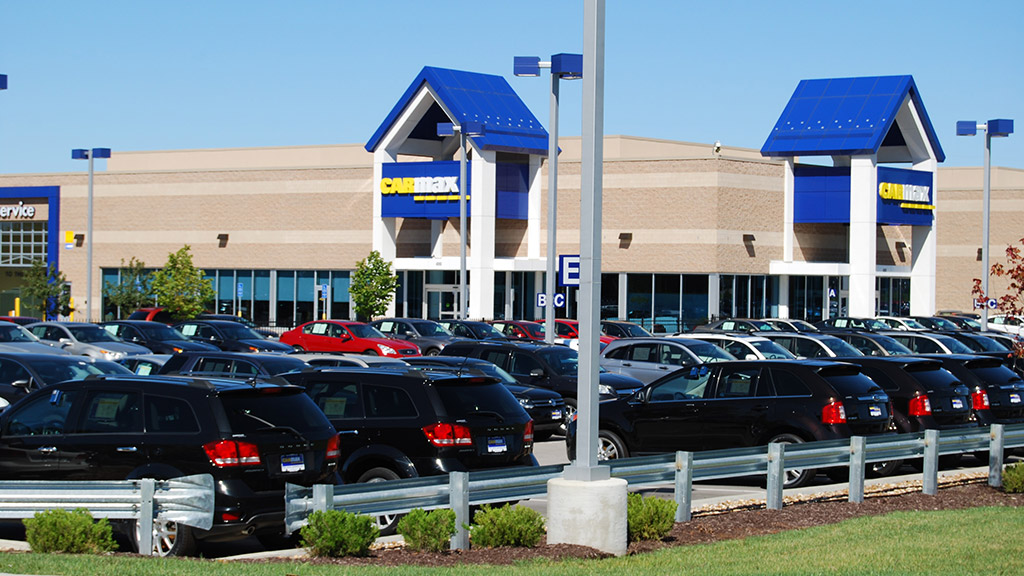Off the Wall
Masonry Cleaning
By Randy Weil
As manufacturers of masonry cleaning equipment for over 43 years, Unique Industries LLC (known by the product name Kem-O-Kleen) has received more than a few questions about cleaning methods. We believe that there is always room to improve and, by sharing ideas and information, we can all be better. With that in mind, we asked some of the masons we know to share their cleaning methods. The first case study below offers a first-hand, detailed account of the steps of the cleaning process. In the second and third, we avoided duplication of methods while addressing some unique situations.
Case Study #1
Company: JVS Masonry, Commerce City, Colo.Principal: James Serowski, owner; Robert Copeland, masonry cleaner.
Masonry Project: Garland Country Day School Expansion.
Brick: Blonde Modular Brick, 20,000 sq. ft.
Mortar: Type S with Buff Color.
Equipment: Kem-O-Kleen K-3003.
Chemical: Prosoco Sure Klean 600.
Unusual Features or Challenges of the Job: Different patterns and details: soldiers, recessed brick, stair stepping, among others.
Cleaning Method (step-by-step description):
- Most of the scraping was done by the laborers when they took down the scaffold.
- Start by looking for a pattern — how wide a swath will be cleaned.
- It’s important so that one can keep track of progress easily during cleaning.
- Look for minor flaw, shadow, building feature to locate the edges of the pattern.
- Generally, one can wash an area 8 feet wide x 6 feet high standing in one spot. I use a custom 6-foot wand. I also have 2.5-, 3.5- and 4.5-foot wands with quick disconnects to cover a variety of situations.
- Start at the top of the pattern area. Wet the pattern area with hot water.
- Return to the top of the pattern area and wash the top three courses. This lets some chemical flow evenly down the wall and soften mortar smears below. This small amount helps speed the cleaning considerably.
- Go to the bottom of the pattern (generally 8’ W x 6’ H) and start to apply chemical in the hot water stream. The chemical is activated by the hot water, and the water itself provides scrubbing action at the same time. While there are different methods, working from the bottom up can help provide clear visibility of the cleaning that needs to be done. I find that working from the top down can cause too much foam, which can obscure the smears that need to be removed; and where the wall has already been cleaned.
- Work your way up the pattern area, applying chemical and hot water.
- Rinse the pattern area. This must be a thorough rinse to make sure any unspent chemical is washed completely from the wall.
- If the building is 12 feet high or taller, there would be more than one pattern block vertically. In that situation, move on to the next pattern, generally the pattern block below.
- When working on pattern block below the ones already washed, I am typically in rinse mode because the chemical that has sheeted down the wall has already softened the mortar residue.
- I prefer to wash on a manlift, ladder or on the ground. It is much easier to move the hose around compared to being on a scaffold.
- When I reach the ground, I go back to the top and the adjacent pattern area and do it all over again.
- I overlap pattern areas by 1–2 feet. This helps avoid streaking.
Case Study #2
Company: L.A. Buford, Inc., Owensboro, Ky., founded in 1948.Principal: Tom Buford, president.
Masonry Project: Independence Bank, a replica of Independence Hall in Philadelphia.
Brick: Belden 154,000 installed.
Mortar: Type N Brixment.
Equipment: Kem-O-Kleen Masonry Cleaning System.
Chemical: Prosoco Sure Klean 600 and hot water only.
Let me start with a few words about cleaning, in general. If possible, we try to clean on Saturdays. We find Saturdays to be far more productive than cleaning on weekdays, On Saturdays, there are few people around to slow access, there is less traffic to avoid, less risk of damage to equipment (example: hose damaged because it was run over by machinery), no one inadvertently turning off your water supply, and no one complaining about getting them wet!
We have used Kem-O-Kleen for all our cleaning since 1977 (we now have four of them!). It maximizes our productivity — 38,000 bricks cleaned in six hours on a Saturday with this machine and two people. It also maximizes consistency; temperature, pressure, water flow, and chemical mix/flow are tightly controlled. Consistency is so important in our business. I can drive around town and notice buildings cleaned by others 25 years ago, and there are still vertical stripes where the cleaning was uneven.
A unique feature of cleaning the Independence Bank building was that we cleaned the rear wall of this building using only the heated high-pressure water from our machine. We had used Sure Klean 600 on most of the building. When it came to the rear wall, the stainless steel drive-up window was already installed and our Mastclimber was nearby. We didn’t want to use an acidic cleaner near either the stainless or the Mastclimber, so we went with just hot water. We used the same method of cleaning, just without chemical. The cleaning of the rear wall took longer, but it came out looking exactly like the rest of the building. The general contractor and bank loved the masonry.
Case Study #3
Company: Swanson Masonry, Inc., St. Charles, Mo.Owner/Principal: Rick Swanson.
Masonry Project: Car Max, St. Peters, Mo.
Brick: 30,000 Colored CMU, Split Face and Smooth Block.
Mortar: Buff Type S.
Equipment: JLG 60-foot lift, Kem-O-Kleen, Model K-3003 Masonry Cleaning System.
Chemical: Prosoco Sure Klean 600.
This might have been a typical cleaning job, if there is such a thing, but we had an extremely tight schedule. To make matters worse, we had to do the cleaning when other trades were on the job.
As part of the setup, we planned out our approach to clean efficiently while minimizing interaction with other trades. Barriers to block spray to the interior spaces were put in place where needed and checked. We assigned two men to do the cleaning.
We used our standard methods:
- Be sure the surface is free of mortar globs, and scrape if necessary.
- Flood the wall with hot water.
- Apply chemical in the hot water stream.
- Rinse thoroughly with hot water.
The owner said this was the cleanest facility they have built around the country. They were specifically impressed that the CMU did not streak (as they typically see with other cleaning methods) and the mortar joints were not burnt.
Conclusion
For most of the people we work with, cleaning is a very important aspect of every job. Many see it as a way to differentiate their company from the competition. We hear words like “pristine.” We hear of times when jobs are won because the general contractor’s or architect’s attitude is, “I don’t know what you do differently, but I know your work always looks better.” Often, the difference is how well the masonry was cleaned. Great cleaning pays off!Originally published in Masonry magazine.
About the Author
Randy Weil is the President of Unique Industries.






















